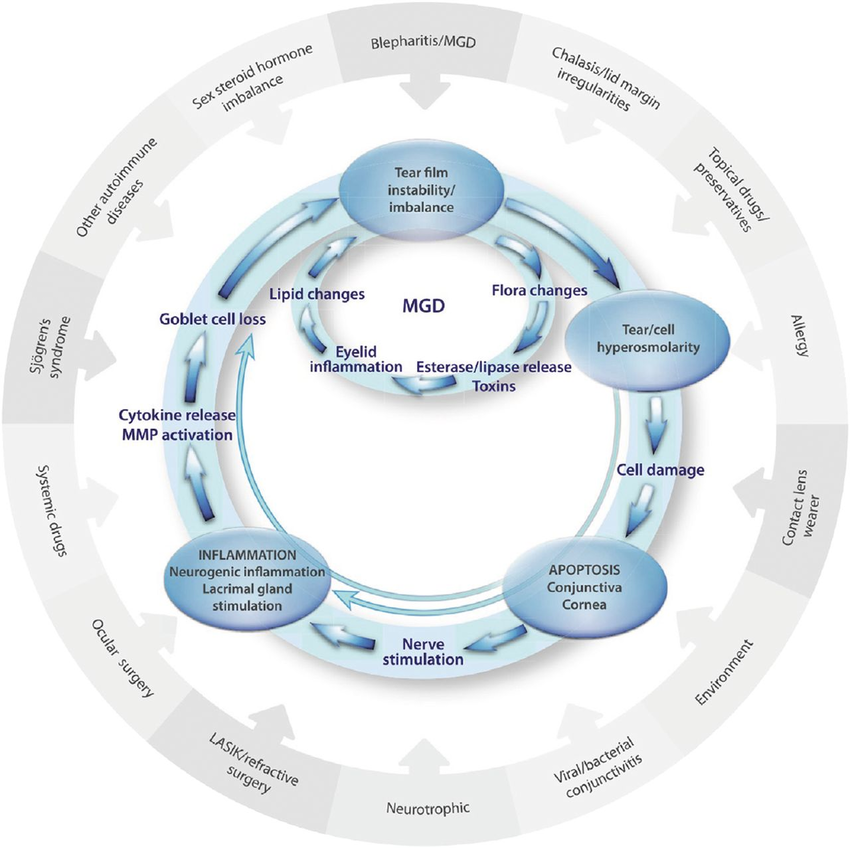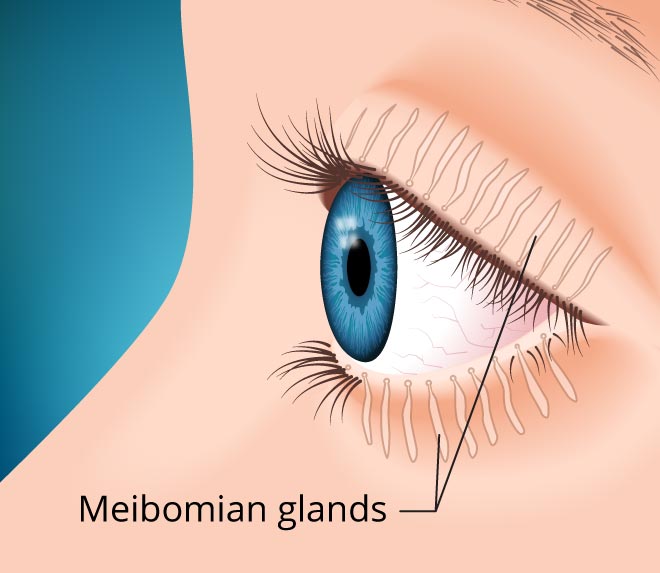Dry Eye Syndrome
Dry eye is a disease of the surface of the eye which leads to ocular symptoms such as burning, stinging or gritty feeling and sometimes blurry vision.
Over the last ten years there has been a large rise in the number of people suffering from Dry Eye Syndrome.
Initially it was thought that dry eye was caused by a lack of production of the watery later of the tears and hence the mainstay of treatment was to use lubricating drops. However, clinical evidence showed that for most people the use of drops relieves the symptoms only temporarily. This is not surprising as the drops are drained away quite quickly into the back of the throat just like normal tears. This meant Dry Eye sufferers had to use the drops very often throughout the day to achieve any relief.
It is now thought that Dry Eye is a much more complicated multifactorial disease. It can be caused by tear film instability, inflammation of or damage to the ocular surface and sometimes by damage to the nerves of the front of the eye.
Root Causes of Dry Eye
- Dry Eye can be caused by a lack of the aqueous (watery) layer of the tears or by a lack of the oily layer of the tears (meibum).
- Dry eye can also be caused by inflammation either from the lack of tears themselves or by long term wear of contact lenses, ocular allergies, infections and certain systemic or ocular medication.
- Dry Eye can also develop after treatments such as LASER refractive surgery.
- Dry Eye is also linked to many autoimmune diseases such as Sjögrens syndrome and rheumatoid arthritis.
- Dry Eye has also been linked to changes in hormone levels and is thought to be more common as we get older.
- Dry Eye has also been linked to increased screen work.
At the Dry Eye Centre we perform a series of assessments to try to identify the root causes of your dry eye and choose an effective treatment.

At the Dry Eye Centre we believe that the increase in Dry Eyes and Dry Eye Syndrome is linked to our modern lifestyle.
The majority of us now use a computer, mobile phone or tablet on a regular basis.
When we perform these tasks we concentrate very hard and we tend to stare at the screen. This reduces the amount of blinking from around 10-20 times a minute to, in some cases, only once in 5 minutes. Often when using the computer the blinks that we make are not full ones.
Blinking is important as it distributes the tears over the eye lubricating the surface and also providing oxygen and nutrients to the eye. If we are not blinking enough we do not lubricate the eye leading to the symptoms such as burning that we associate with dry eyes. As there is not enough lubrication there is also an increase in friction between the lid and the eye and this can exacerbate symptoms even more.

Blinking also squeezes glands on the lid margin of the eye called meibomian glands. When they are not squeezed they do not release the oily layer of the tears – reducing tear quality and leading to Dry Eye symptoms. In addition, as we are not blinking enough the oily layer begins to block the meibomium glands. A vicious cycle begins leading to gland blockage. Once the glands are blocked they will not become unblocked without treatment, we call this meibomian gland dysfunction. Eventually without treatment the glands begin to atrophy and can no longer function again.
At the Dry Eye Centre we will assess your blinking and give you advice on how to improve it. We will also tell you if you have meibomian gland dysfunction and help you to get the glands working again.
